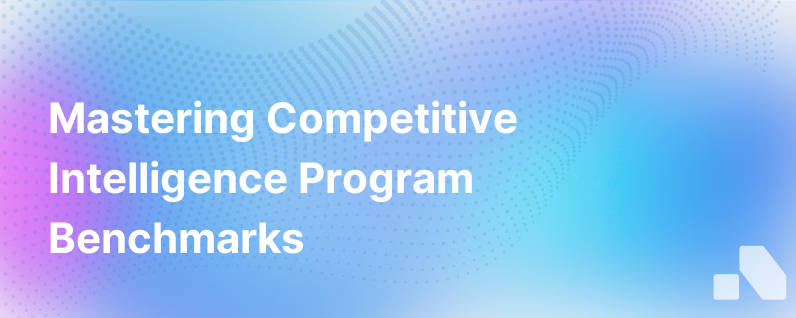Competitive Intelligence Program Benchmarks
Published on October 19, 2023 by David Zhang
Competitive intelligence is not just a nice-to-have component in a businesses' toolkit. It is increasingly becoming an integral part of ensuring growth and sustainability in today's cutthroat market. In the era of digital transformation, knowledge of your market and competitors is crucial to stay ahead of the curve and make informed, strategic decisions.
From strategic planning to product development, sales prospecting to customer retention, the applications of competitive intelligence are vast. But how exactly do you measure the success and value of your competitive intelligence (CI) program?
In this comprehensive guide, we will delve into the performance metrics and benchmarks of a sound competitive intelligence program.
What is a Competitive Intelligence Program?
A competitive intelligence program is a strategic approach employed by businesses to gather and analyze information about their competitors and the market environment. The objective is to gain a competitive edge by comprehending the competitive landscape and leveraging the insights to inform business strategy.
Key Performance Indicators for a Competitive Intelligence Program
To assess the performance and value derived from a competitive intelligence program, organizations need to track several key performance indicators (KPIs). Here are the significant ones to consider:
-
Market Share Increase: An effective competitive intelligence program should lead to an increased market share, a crucial KPI. As your business adapts and responds to competitive insights, you should see growth in your industry presence.
-
Improved Sales Efficiency: Competitive intelligence should enable your sales team to close deals faster and more efficiently by supplying the insights they need to counter competitive claims and highlight your unique selling propositions.
-
Decreased Time-to-Market: Competitive intelligence should accelerate your product development cycles. By understanding what's currently in the market, what's missing, and what customers crave, your team should be able to hit the mark faster.
-
Customer Retention Rate: An effective CI should result in higher customer retention rates. It armors your customer success team with the data to proactively address churn risks by staying ahead of competitive threats.
-
Product Adoption Rate: A noticeable increase in the adoption of your product serves as a positive indication that your competitive intelligence program is working. The insights from CI should be fueling your product positioning and sales efforts to drive adoption.
-
Increased Revenue: Ultimately, a successful CI program leads to increased revenue. This could be through winning more deals, expanding current customer accounts, or reducing churn. Put simply, if your CI initiatives are adding value, you'll see it in your revenue.
Competitive Intelligence Program Benchmarks
Despite the fact that not every organization operates similarly, universal competitive intelligence program benchmarks can be referenced to gauge performance:
-
Time to Insight: Ideally, it should take less than a week to generate actionable insights from competitive intelligence. Anything longer might render the information obsolete due to the rapid pace of business.
-
CI Team Size: While dependent on your organization's size and industry, a typical competitive intelligence team is often composed of 1-2% of the total employees.
-
Competitor Coverage: A robust CI program should cover around 80% of your main competitors. Meaning, you should have useful insights on at least 80% of businesses considered threats.
-
CI Reporting Frequency: Weekly updates are generally considered the benchmark frequency for sharing competitive insights with your team.
-
Savings through CI Investments: The CI program should manifest a positive ROI. A well-executed program could yield a return of 3X to 10X the investment made in competitive intelligence activities.
Best Practices for Tracking Competitive Intelligence Metrics
To track these metrics and benchmarks effectively:
- Establish a Baseline: Before you embark on any competitive intelligence project, establish the baseline metrics you intend to improve.
- Set Key Objectives: What is the primary aim of the competitive intelligence exercise? Ensuring that clear and measurable objectives are in place is essential.
- Regularly Monitor and Adjust: Monitor your metrics continually. If your initiatives are not reaching the desired impact or delivering the right insight, be ready to adjust and optimize accordingly.
- Visualize Benchmarks and Metrics: Visualization tools can aid in easily digesting and applying insights. A well-crafted dashboard can help translate data into decisions.
In conclusion, setting up a competitive intelligence program is a substantial business decision. Still, its value proposition can be massive given the rise in competitive industries and dynamic consumer behaviors. Without keeping track of the performance metrics and industry benchmarks, your CI efforts might fall flat or be misdirected.
Through Aomni's AI-powered competitive intelligence platform, you can automate the research, benchmarking, and intelligence synthesis processes, allowing more time for strategic planning and decision-making to take the front seat. It gives your competitive intelligence program the edge it needs to make a real impact.